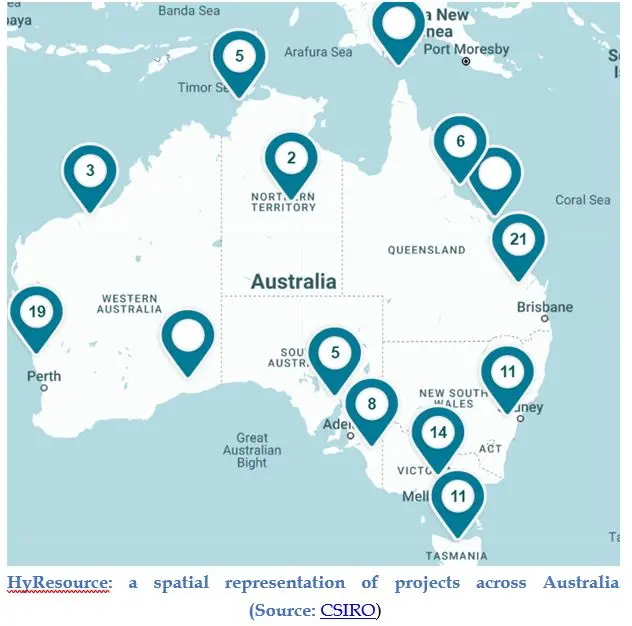

The Gastech 2023 event, held in Singapore in September, saw over 40,000 attendees and more than 750 exhibiting companies showcasing their latest innovation for the growing new needs in the industry. At the 4-day event, industry experts, business leaders and government leaders discussed hot topics on energy transition, decarbonization, and the challenges involving greener energy alternatives, LNG and hydrogen, and the Australia hydrogen hub is an emerging factor.
Hydrogen is touted to play a key role in the energy transition for nations worldwide to achieve their net-zero goals by 2050. Austin Knight, Vice President, Hydrogen at Chevron New Energies shared the same sentiment and his optimism on the future of the hydrogen industry. Earlier in 2021, Chevron announced a goal to produce 150,000 tons of hydrogen annually.
Knight sees Asia as one of the top-tier demand centers for hydrogen and its derivatives including ammonia. According to him, countries that are strongly committed to their climate goals but faced constraints to be self-reliant on renewables, are energy importers and would likely be energy importers in the future. Japan, South Korea, and Singapore are among these energy importer nations.
Australia is the third country after Japan and South Korea to announce a hydrogen strategy plan and aims to be a renewable energy leader by 2030. The abundance of land, wind and sun is advantageous for the country to explore a wide range of sustainable energy solutions, from renewable electricity generation, carbon capture and storage and renewable hydrogen production and storage. As of 2022, more than 100 hydrogen projects worth around $230-300 billion of potential investment are in the pipeline. According to Bloomberg New Energy Finance, the investment in the country’s hydrogen and derivatives industry makes up about 40 percent of the global renewable hydrogen projects.
The availability of strong government support and industrial collaboration is key to accelerating the Australian hydrogen industry. In 2022, a collaboration involving the government from Japan, Australia and Victoria, and the respective countries’ industry see the completion of the world first liquid hydrogen export when the world’s first liquefied hydrogen carrier “Suiso Frontier” transported the cargo from the Port of Hasting to the Port of Kobe.
However, not all the Australian projects have been progressing rapidly. Among which 2 areas have seen better progress. One is the production of hydrogen for use as a feedstock for green derivatives (ammonia and methanol), and the other is the production of hydrogen (and derivatives) for electricity generation for export, as co-firing of ammonia with coal or gas-fired power plants are explored by the country major export partners: Japan, South Korea, and China.

Electrolysis is the main method for the hydrogen production projects in Australia. To date, the largest electrolyser, scheduled for completion in 2024, is for the Yuri Renewable Hydrogen to Ammonia Project. A 10 MW electrolyser powered by 18 MW of solar PV and supported by an 8 MW battery energy storage system would be constructed at the existing adjacent ammonia plant operated by Yara Pilbara Fertiliser Pty Ltd (YPF) to generate up to 640 tons of green hydrogen per year in Karratha, Western Australia.
The H2Kwinana project, still at its infancy stage, is one of the major projects pending a final investment decision. Kwinana is the site of a former BP oil refinery which was closed in 2020. The facility was to be converted into a renewable and clean energy production hub to produce green hydrogen, sustainable aviation fuel and renewable diesel to support domestic and export demands. An electrolyser of at least 75MW, hydrogen storage, compression, and truck loading facilities, and upgrades to BP’s existing on-site hydrogen pipeline was proposed for the hub.
For Singapore, the scarcity of land, and a limited capacity to generate green energy at a large scale can be a roadblock for future economic growth. Singapore is a major datacenter hub for Southeast Asia but a moratorium on new data center projects was imposed in 2019 amid the growing sustainability concerns. Though the moratorium was lifted in 2022, a capacity cap was introduced, prompting operators Keppel and Equinix to explore the feasibility of using hydrogen to power up the facilities. Keppel for instance, has begun exploring the possibility to import liquid hydrogen from Australia to power its upcoming floating data center park in Singapore.
Additional information from ARC Advisory Group on Hydrogen Electrolysers is located at Hydrogen Electrolyzer Market Research.

